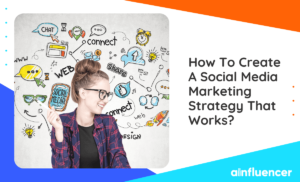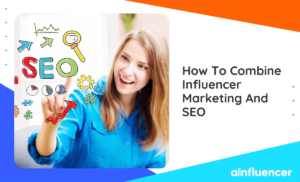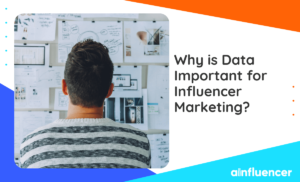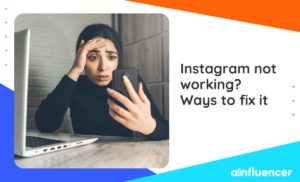Getting started with advertising might be a bit intimidating. There is a lot to unpack, as there are various methods of reaching the target audience. However, it is not as complicated as it might seem. This guide will show you all the basics a beginner needs to know.
Principles of Modern Advertising
Creating a good product or service is just the first step to success. If people do not know about it, they cannot buy it. That’s why brand marketing is essential. It is important not to confuse marketing and advertising. Marketing includes a huge variety of methods, and advertising is just one of them.
The main principle is to showcase the brand and offer value to the target audience. For example, platforms like WritePaper.com do that well. It is an academic writing service that offers help to students with their college assignments. They offer customers value – expert advice, immediate help, and excellent results. This proposition is based on what students are looking for.
Some of them struggle with academic writing as a whole and need help with essays or research papers. Others do not have time and need someone to meet the deadlines. And another group might not feel confident in their skills and look for proofreading and polishing. So the platform delivers it all on short notice. Such a marketing strategy is successful because it solves the issue students struggle with.
The same applies to any type of business or endeavor. If you sell online courses, showcase how they will solve problems the target audience might have. If you are working on a personal brand, highlight how it corresponds with the audience’s values and interests.
Any piece of advertising needs to aim at a specific group of people based on what those people are looking for. The basic idea is to get users interested in your brand or product. Any campaign needs to have:
- Target audience (who they are, where they can be found, what they are looking for, what motivates them);
- Goal;
- Budget;
- Timeline;
- Effective execution methods.
Goals depend on what your marketing strategy implies at the moment. Some of the common goals are:
- Raise brand awareness;
- Drive potential clients to the website/app/social media;
- Increase conversions;
- Increase sales;
- Introduce a new product/service;
- Make your brand stand out from the competition.
And based on the goal and target audience, one decides on what means to use.
Modern Methods of Advertising
Overall, all the means can be separated into digital (online) and traditional advertising. The first is more modern, so let’s begin with it.
1- Online Advertising
This group includes any type of paid promotion one can see online. It is incredibly popular today as part of digital marketing as it is very effective. The main thing that differentiates it from traditional means is that it is data-based.
If you own a website or social media page, you get access to comprehensive analytics on visitors, demographics, and how they interact with ads/posts. You can also see the campaign’s effectiveness in numbers, so there is no guessing game.
This increases the effectiveness of these methods. If you put it on a billboard, you have no idea how many people saw it and what their response was. But if you put it on a Facebook campaign, you’ll know exactly how many people saw it, where they are from, and how they interacted with it.
There are several popular online promotion means.
2- Paid Search Advertising
The idea is to create an ad that corresponds with specific searches people do. Then you pay Google, for instance, to showcase your ad when people are looking for this particular keyword. Everyone has seen it. When you are searching for something on Google, the results page often has a couple of first results signified as “advertising.” This is paid search method.
The benefits are obvious:
- It is targeted at a specific group and keyword;
- It is cost-effective (you pay for actual clicks on your link);
- It is efficient;
- It reaches the audience easily.
3- Social Media Promotion
The next method is putting ads on social media platforms like Instagram, Facebook, Twitter, LinkedIn, YouTube, etc. It gives a quick ROI (return on investment) because of the streamlined processes. It also provides versatile analytics and wide reach.
There is also much more freedom in how you design the campaign. And it is quite affordable as well. Another benefit is that you set the budget unlike the previous one.
The main objective is to choose a platform where the majority of the target audience is. For example, if the majority of your target audience is on Instagram, learn Instagram promotion strategies and promote your ad there.
4- Native Advertising
This is a more subtle way to attract attention. It is often blended with the content on the website. It can be in the form of a video or article. It is important to make the content itself interesting and valuable. So the promotion should be secondary.
Otherwise, it will be a sales pitch, and no one likes that. Sponsored content also goes into this category.
5- Display Ads
It is a very direct and popular approach. These are digital banners or pop-ups one can see on almost every website on the internet. They are obviously trying to sell something – no subtlety in that. The main benefit is that they have one of the biggest reach potentials.
These campaigns are shown on a variety of sites based on users’ search history and data. However, users often ignore them, so their popularity has declined in recent years.
6- Traditional Means of Advertising
Although there is a huge emphasis on digital marketing, traditional means are still going strong. They have proven their effectiveness and can be extremely helpful when done right. The main idea is to deliver a specific message through mass media or physical presence.
There are several types one might consider.
6-1- Print
It is probably one of the most common ones. In this case, a brand places its message in a newspaper, magazine, or brochure. Some also use direct mail and flyers. Overall, it needs an attractive appearance and a clear call to action.
6-2- Broadcast
This refers to reaching the target audience via television or radio. It is quite an expensive yet very sufficient option. It can be quite risky as people tend to skip those promotions or change channels quite easily. And it is more suitable for huge corporations that can spend a lot on a campaign.
6-3- Out-Of-Home Promotion
This group refers to all messages potential customers can see when they are outside (billboards, public transit, or public places). It often increases brand awareness and supports the overall marketing campaign.
When done creatively, it can be extremely well-received. The main downside is that such a method is not targeted. You have no control over who sees the ad and how they respond. Or whether they have time to pay attention to it at all. People do not spend a lot of their time looking at billboards.
In Summary
The choice of particular methods depends on the business, product, target audience, and budget. Generally, digital promotion is much more affordable than traditional one. Hence, a lot of individuals and brands use it. Also, it is often easier to execute. However, conventional means are still going strong and perform great.









